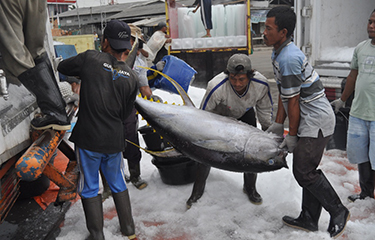Uncertainty hangs over a June 2021 agreement by the Indian Ocean Tuna Commission (IOTC) to limit the total Indian Ocean yellowfin tuna catch to 401,000 metric tons (MT) after six members of the commission announced intentions to object to the resolution.
In a statement, the Global Tuna Alliance (GTA) said the move by Indonesia and Oman to formally object to the agreement reached during the 25th session of the IOTC, in addition to the subsequent objections of India, Iran, Madagascar, and Comoros mean the IOTC agreements “may be futile.”
“If all the six countries object and continue to fish Indian Ocean yellowfin tuna at 2019 levels, then the total fish catch for all IOTC members in 2022 could be as high as 465,214 MT, a staggering 64,203 MT above the agreed limit,” GTA statement said.
The six countries – which caught 170,179 MT of Indian Ocean yellowfin tuna in 2019, the latest year complete data is available – have claimed the IOTC agreement would have adverse impacts on their artisanal fishers.
Yellowfin tuna catch limits under the June 2021 IOTC agreement are to take effect in 2022 only.
Previously, the GTA urged the IOTC to limit yellowfin catch to 341,000 MT, less than the 403,000 MT recommended by the IOTC’s scientific committee.
The GTA said it is fearful the effort put into negotiations that paved the way for the IOTC agreement “will be thrown away if these countries formally object.”
“We urgently call on all IOTC member nations to prioritize long-term stock health of Indian Ocean yellowfin tuna for the benefit of local communities and long-term global supply partnerships,” GTA Executive Director Tom Pickerell said.
Previously, the European Union had given two proposals to the IOTC for consideration, including the reduction of “overfishing on the stock of yellowfin tuna in coherence with its continuous efforts to since 2014, and one to counteract the increasing trend of skipjack tuna catch.”
The E.U., which played a key role in the IOTC 25th session’s agreement on yellowfin tuna, accepted a further reduction of 6 percent in catches – pushing up its total reduction to 21 percent compared to 2014 catch levels.
Photo courtesy of Wibowo Djatmiko







